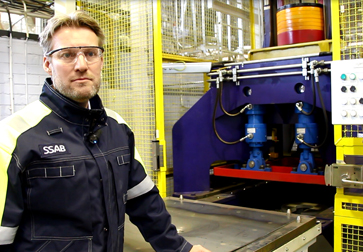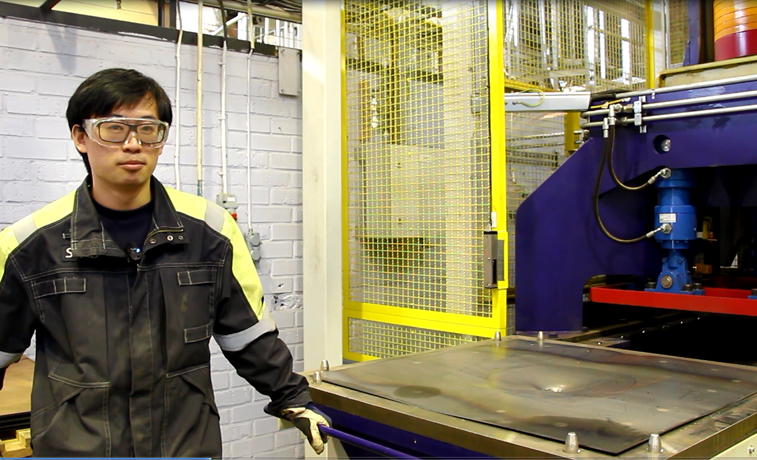Unique drop hammer rig developed with the customer’s interest in mind
A heavy object is dropped onto the sheet and any buckling or cracking is then measured. With the help of tests, developers gain a better understanding of the type of damage a tipper body can sustain under heavy usage, and can therefore build lighter and stronger tipper bodies, for example.
Developing test methods in order to improve the plate's characteristics are importent says Patric Waara manager for Knowledge Service Center and Wear Technology.
“We need to develop our test methods in order to also improve the sheet’s characteristics. And also to test different types of weld seams, and find out which filler metals and process data work best with our steel,” explained Patric Waara, head of the Knowledge Service Center and Wear Technology at SSAB Special Steels.
SSAB’s unique drop hammer rig is now in operation. A project that has run on and off for nearly four years. A machine designed and built in Oxelösund predominantly by SSAB’s own staff. CE-marked and approved for use. The function is to drop a weight of up to 400 kg from a height of 3 meters, onto a sheet that measures 1x1 meter. In order to perform the tests safely the sheet is held in place by 115 tons of pressure, and the actual dropping facility is a cage made of bars and Plexiglas to protect the operator from any possible splinters.
“The drop hammer rig has radically streamlined the tests but above all it is significantly safer to handle as well as being very easy to use. Previously a maximum of 6 drops were carried out per day, requiring 3-4 people. Today we can do up to 30 drops per day with just two people. We can carry out the tests in the 180-400 kg weight range with different radii on the hammer top and frame sizes that hold the sheet in place. The test is carried out on a sheet and, depending on the outcome, you can then adjust the weight, for example,” said project manager Tommy Kan.
Tommy Kan project manager for the drop hammer rig.
The precision of the strike is very high which makes for safe test repeatability and which is also a must when testing welded seams. Using a laser measure you can get 2,500 measure points per second, which means the strike sequence can be logged at a completely new level. This way, more information can be obtained than was previously thought possible. So far the drop hammer rig has made over 250 strikes on sheets, with plenty more on the horizon.
The drop hammer rig is extremely valuable for the development of new products, drop tests have been carried out since the 1970s. Customers will benefit from all the knowledge; the tests can show how constructions can be improved, for example.
“Thanks to our prompt research, SSAB was able to launch improved U-shaped tipper bodies without reinforcements and with significant weight reductions and reduced carbon dioxide emissions. A durable tipper body with Hardox can both be lighter in weight and can also be simpler to produce for the customer. This work is never done, we’re constantly working for lighter and stronger tipper bodies,” explained Patric.
The challenge for today’s generation of tipper bodies is to become even thinner and more durable. In Europe many tipper body manufacturers have already seen the advantages but there is still a big potential for upgrading the bodies to stronger steel. The traditional design still remains in many developing countries, and this is a great opportunity to establish Hardox on a large scale. Today there is great interest in being carbon efficient, which is why the SSAB Eco Upgraded concept was launched. This means that customers can cut down on carbon emissions by upgrading to high-strength SSAB steel. This reduces the weight, improves fuel efficiency and extends product lifespan. Everything that Hardox has stood for over the past decade.

